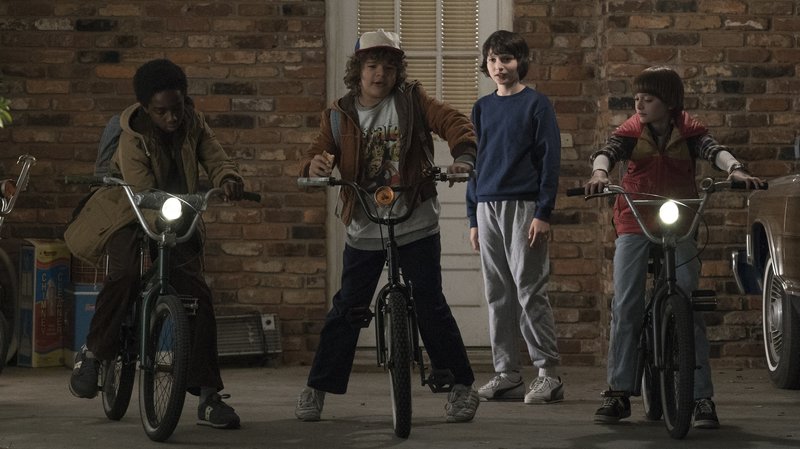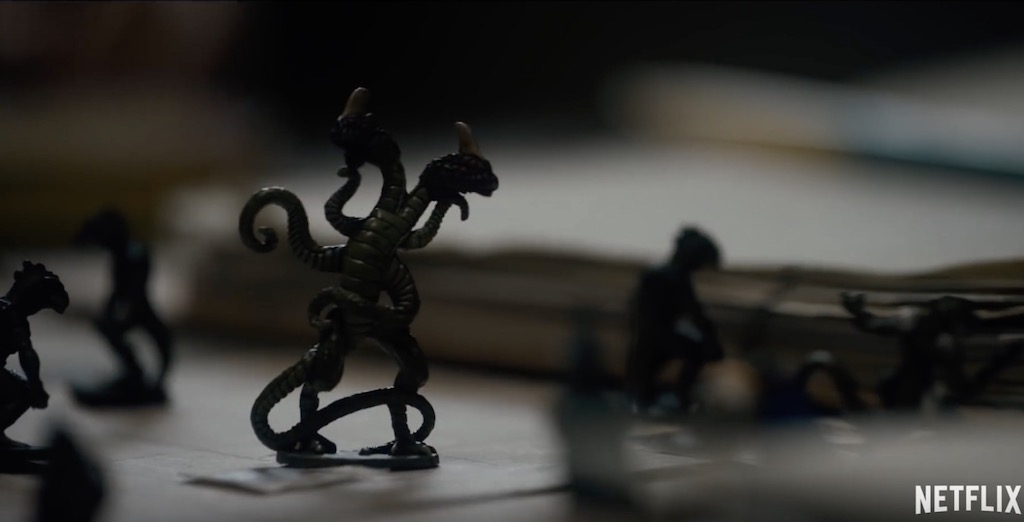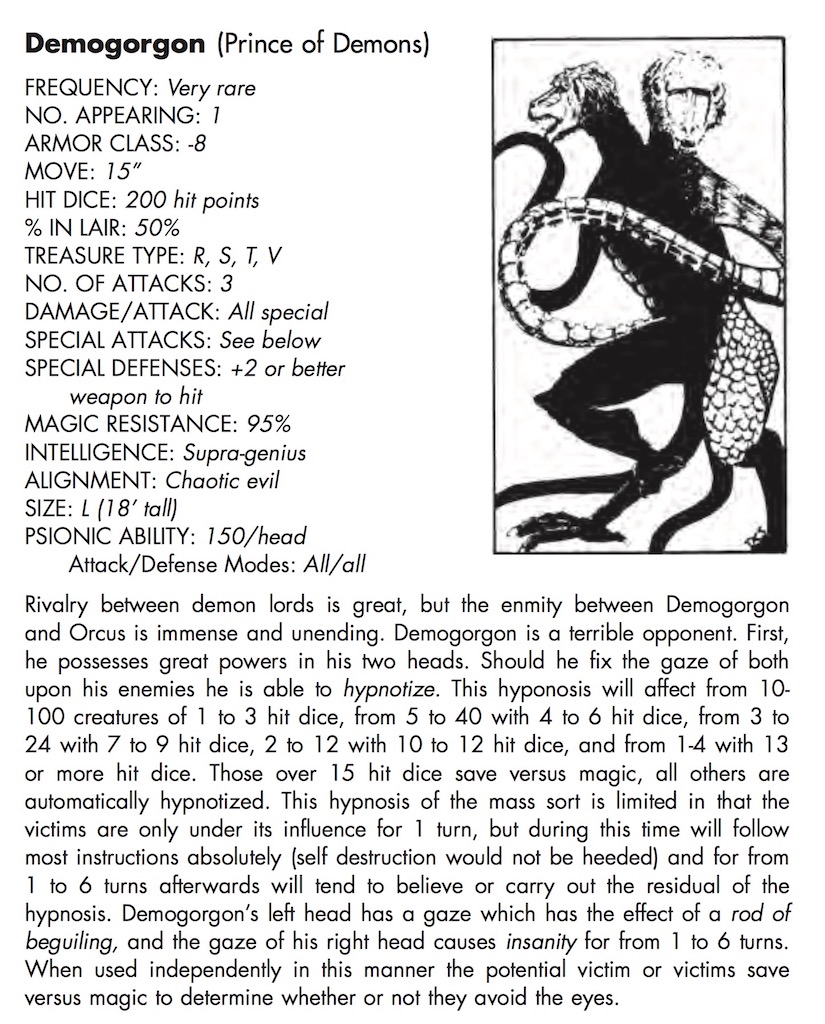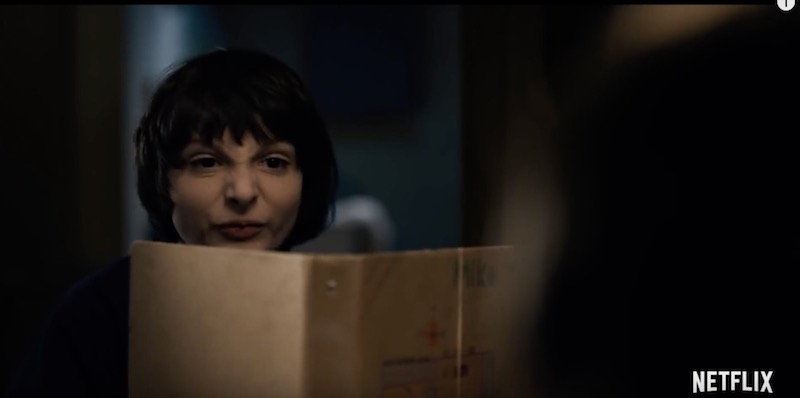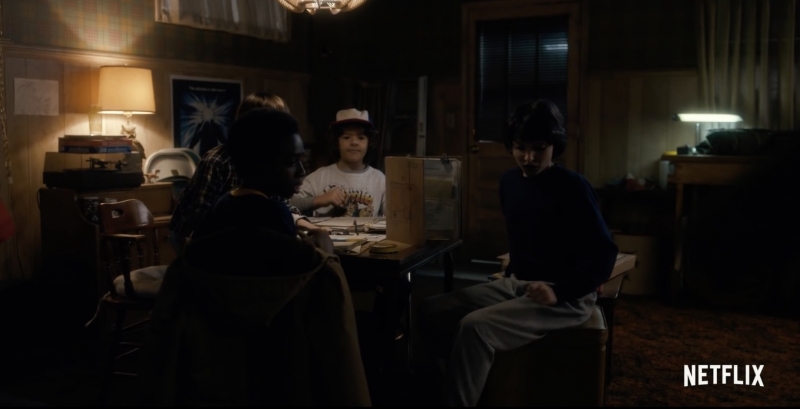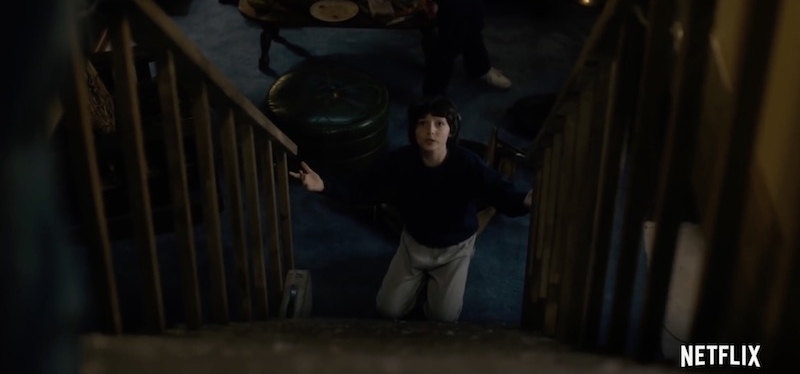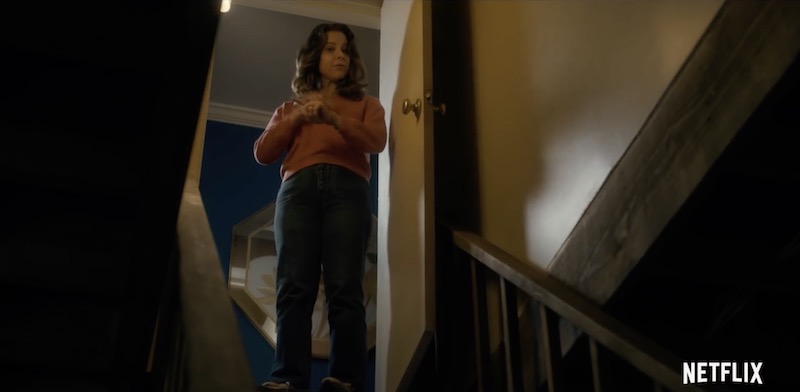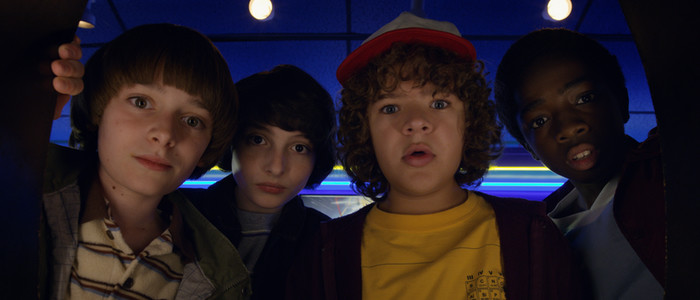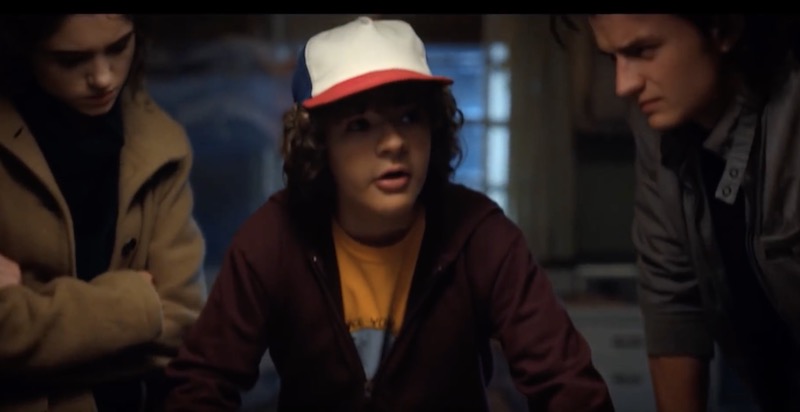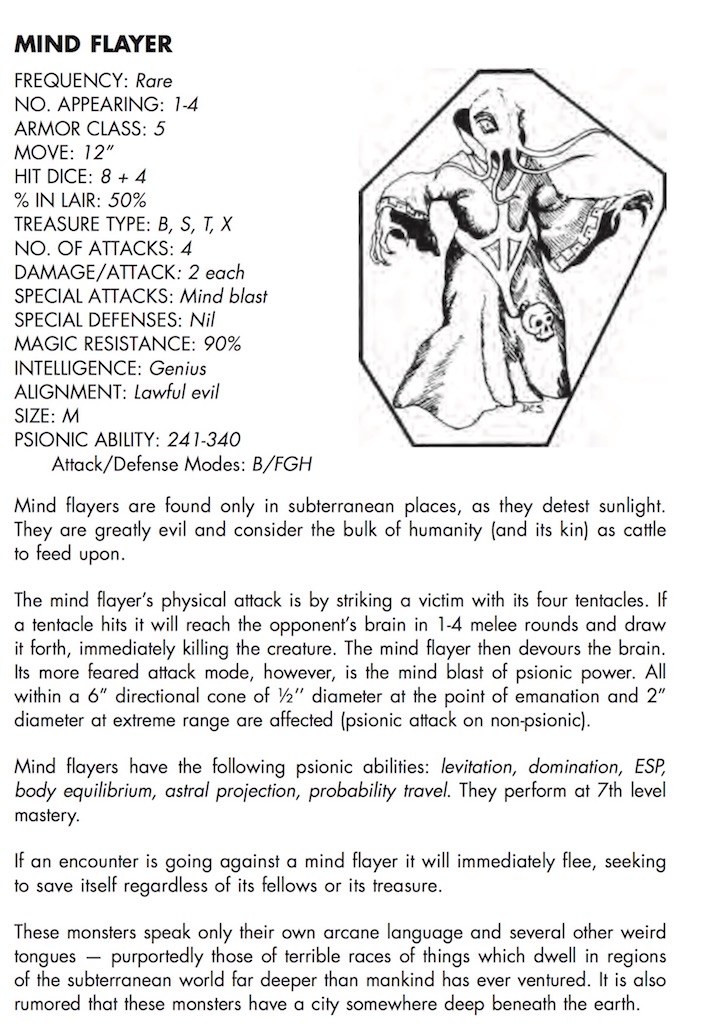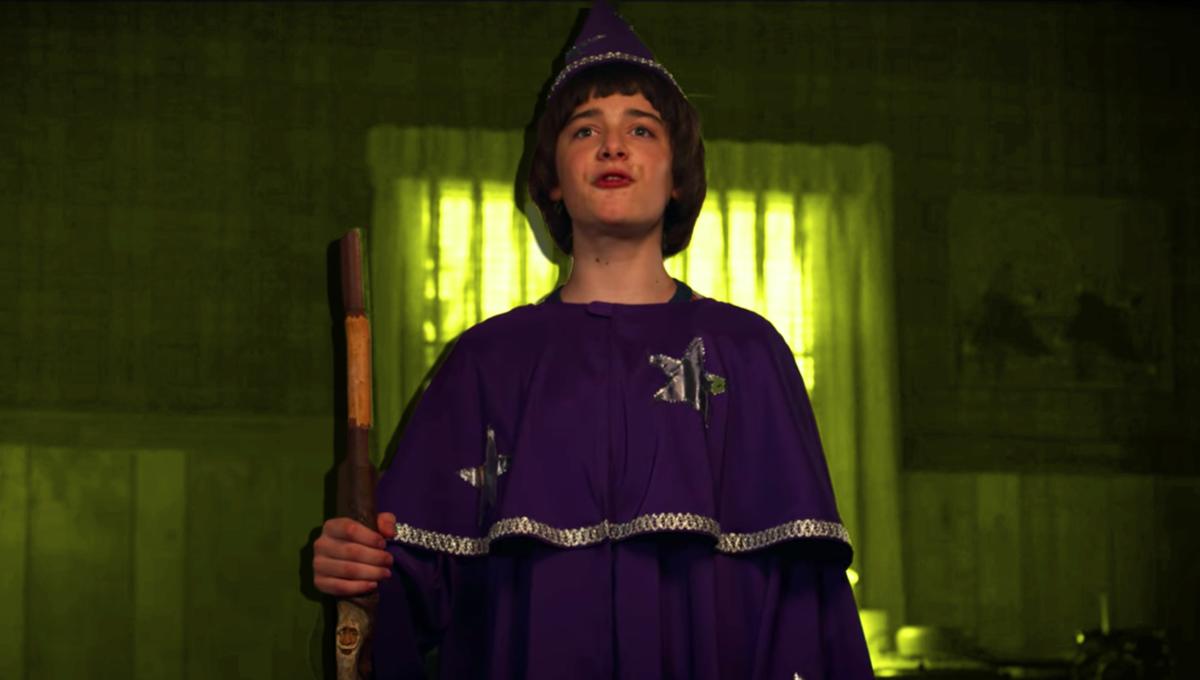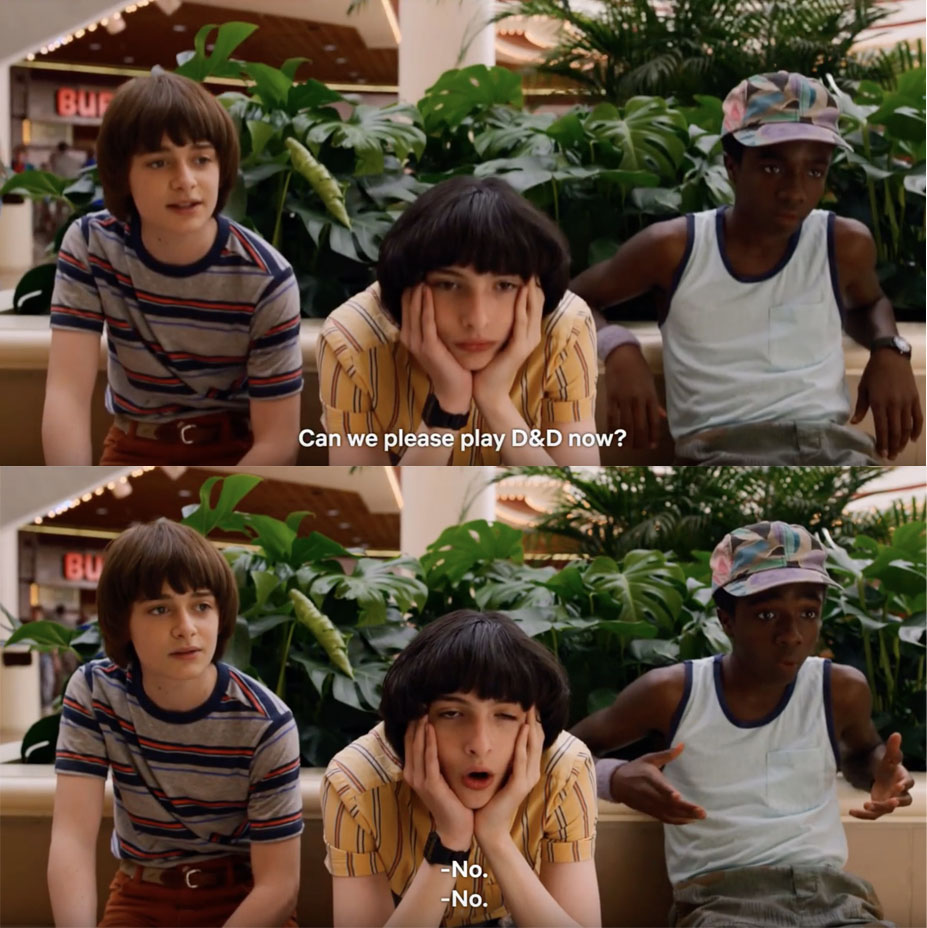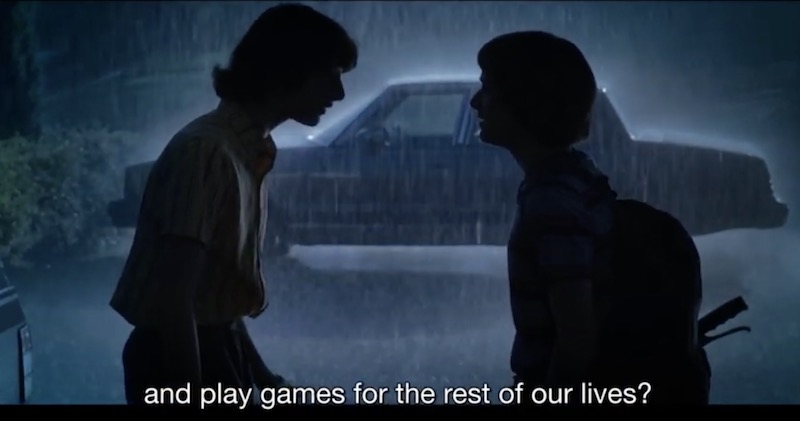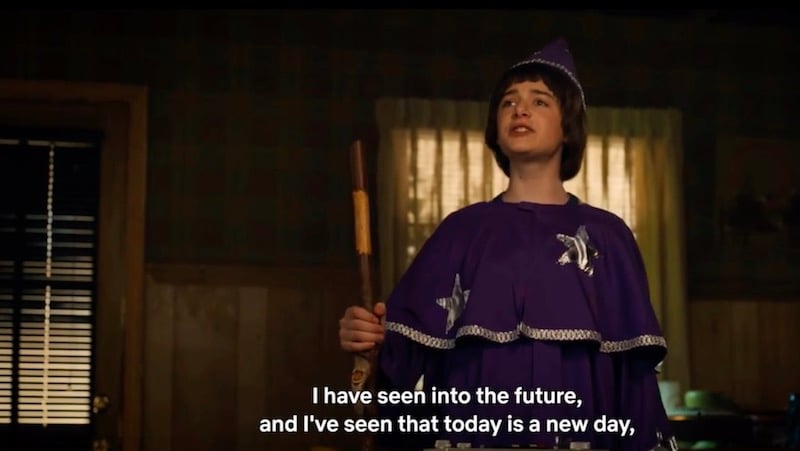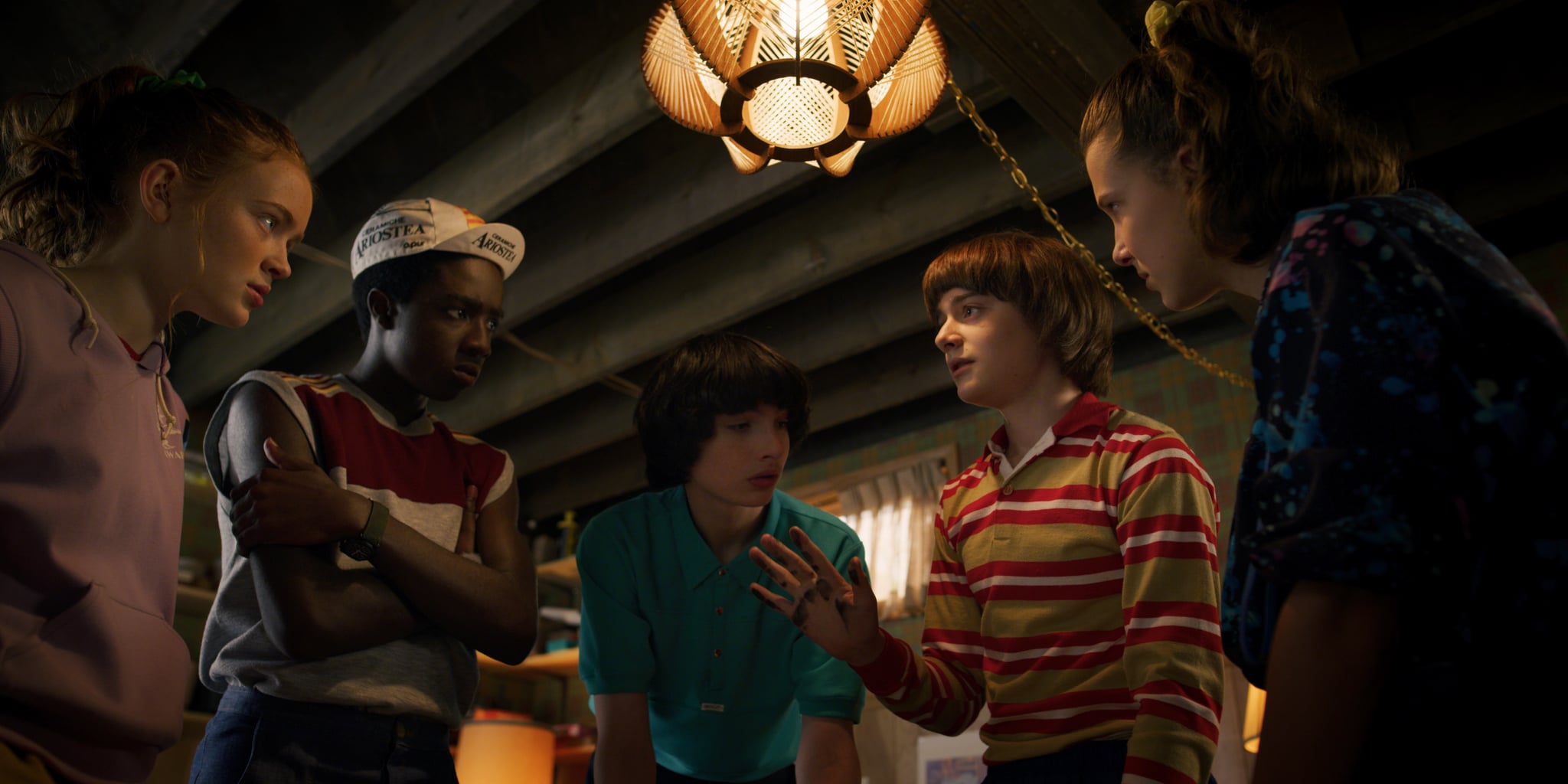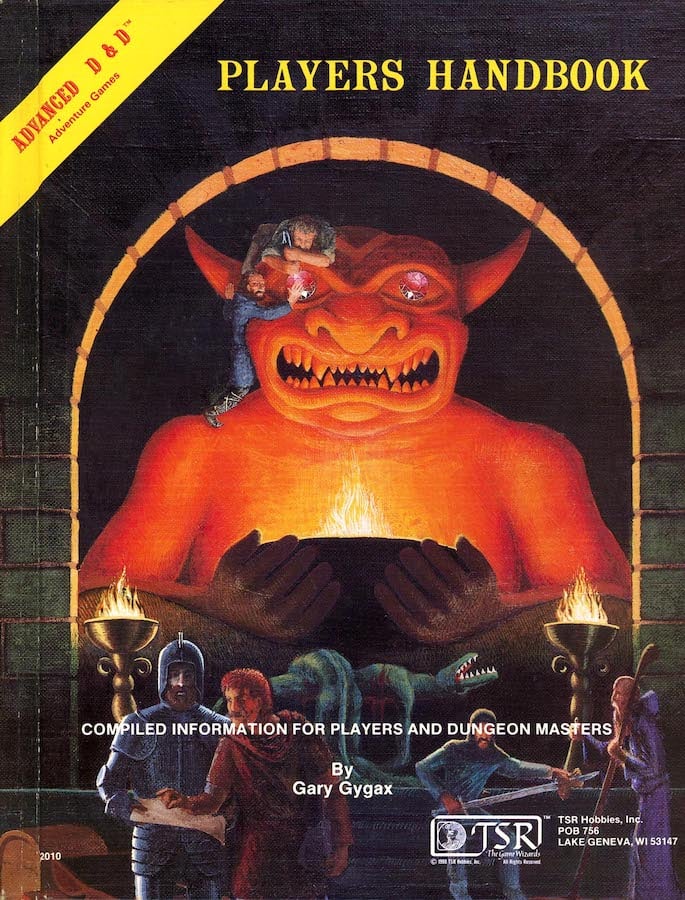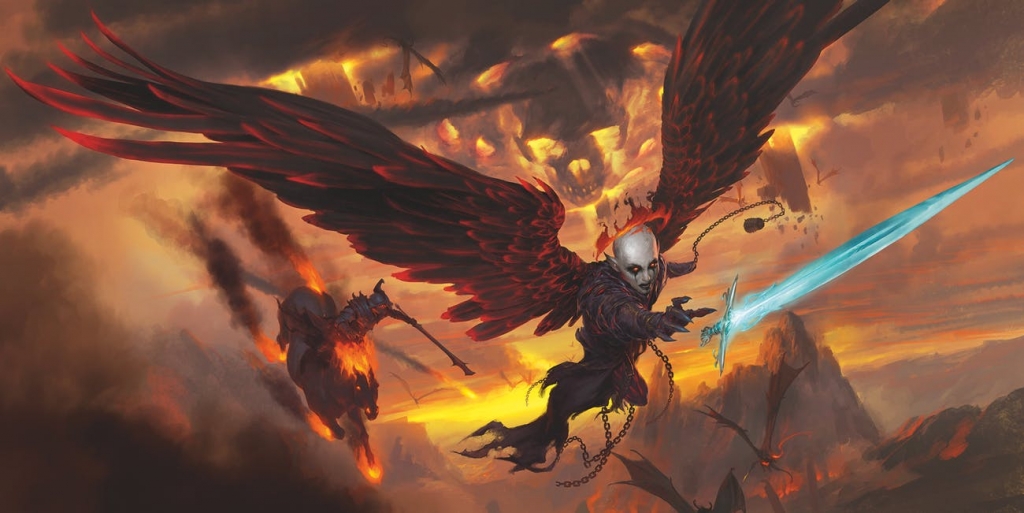D&D In Stranger Things: Just How Accurate Is It? – Prime Bonus
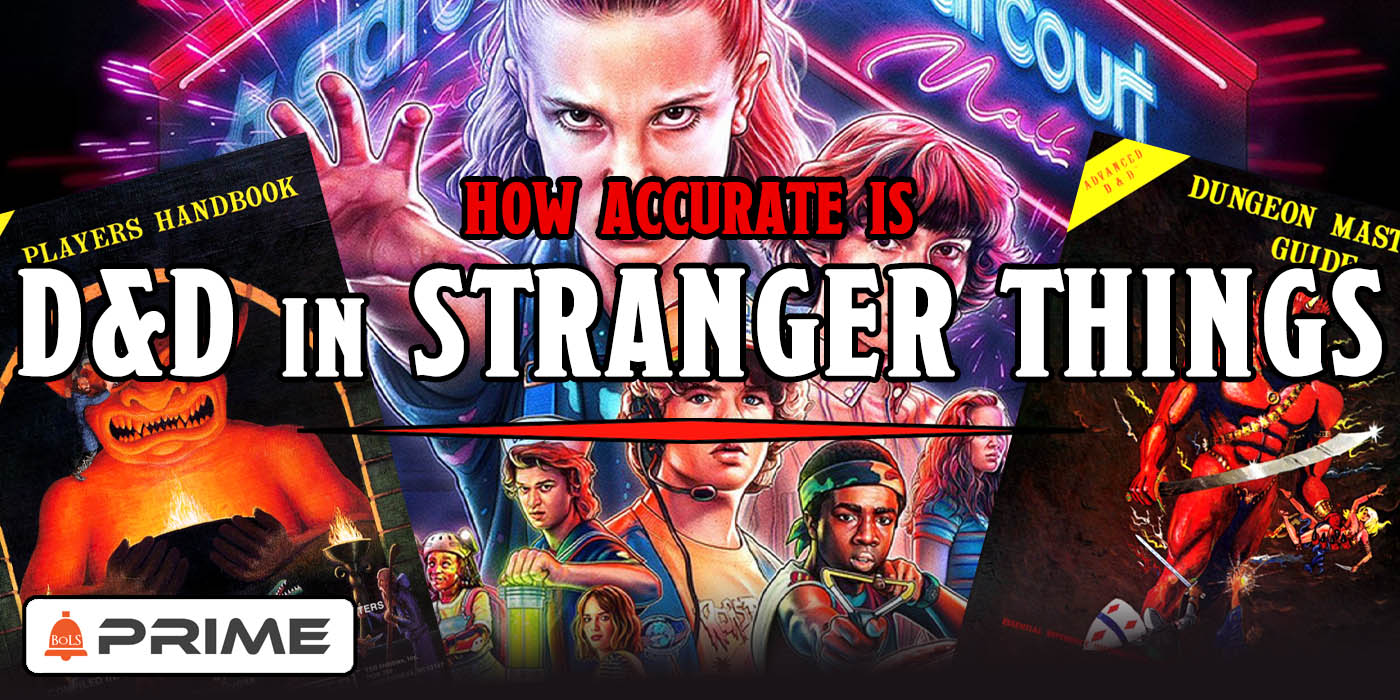

Stranger Things is one reason behind D&D’s surging popularity right now–but just how accurate is its depiction of the world’s most famous roleplaying game?
Stranger Things is a cultural phenomenon. Inspired by movies of the 1980s featuring kids on bikes saving the world, Stranger Things takes place in the ’80s and features a bunch of kids on bikes, saving the world. But unlike their inspirations, which were only concerned with presenting the world of the present day, at the time, Stranger Things is firmly rooted in ’80s nostalgia. It’s apparent in everything from the style of clothing the characters wear…
…to the things on TV, the look of the products in the background. Everything is grounded in the past–it’s a period piece. And, as with most period pieces, it’s riddled with a lot of little details that nobody would ever notice or pay obsessive attention to in the interest of historical accuracy.
Oh wait, we’re on the internet? Never mind, let’s talk about how the cars are too new, the periodic table of elements is from the future, and what exactly it means to “roll a 13” when facing down the Demogorgon. Come join us as we go through Stranger Things and look at just how much they ‘get’ D&D. Now it would be pretty easy to just look at this from a rules perspective–but when conveying an idea it isn’t just the raw data, it’s all about context as well. It’s not enough to convey playing D&D, you have to capture the spirit of D&D in the ’80s which has a certain context. So let’s take a look at our criteria here.
Rules Accuracy
Obviously, we want to know that we’re actually playing D&D here. Do they try to hit armor class 0? Do they have a fighting man? I mean that’s in the title of this article, so you can bet we’re going to be looking at what they’re playing and how close it hews to the rules as they were written in the before times.
Social Context
D&D has a certain context. Back in the ’80s you couldn’t just skate in on your rollerblades, kickflip off of the lunch counter, and throw down some d20s and say, “alright, nerds, let’s quest.” You had to wear quads, for one. But we’ll be looking at how D&D fits with the reality of D&D as it was out in the wilds of the ’80s.
Mouthfeel
How does D&D feel when it’s encountered? Do they capture the anguish of rolling a 3 when you were fine on a 4+? Do they understand those early marathon sessions that later morph into a memory you look back fondly on of a time when things were simpler and you didn’t have to worry about the fact that your friendships from those days are deeper than any casual friendships you have today (and who has time for that anyway? Man what happened to the days?)? Do they portray just how viscerally satisfying it is to put a handful of d20s in your mouth and then spit them out one by one?
You know, normal questions that every D&D player has thought about. Now that we know how we’re judging this, let’s take a look. Spoilers ahead.
“It’s not enough to convey playing D&D you have to capture the spirit of D&D in the 80s…”
Stranger Things Season 1
By now we all know the tale of Mike, Will, Lucas, and Dustin, four kids who just wanted to play D&D and ended up stumbling onto dark truths about the fundamental nature of reality. Like a typical campaign. In season 1, D&D features prominently at the very beginning of the story. We’re introduced to these four heroes at the thrilling conclusion of their D&D game. The three heroes are facing down against an army of Troglodytes and… the Demogorgon.
In order to stop the Demogorgon, Will (playing a Mage) has to decide between casting Fireball or a Protection spell, and opts to choose the risky maneuver of a fireball even though he’d need to “roll a 13.” Now it’s at this point that most people take to whatever section of the void they choose to scream into and shout about how you don’t need to roll a 13 when casting fireball. Usually, it’s the monster that has to make a saving throw vs. spell, and back in the 1st Edition Days, our friend Demogorgon (no “the” needed) had 95% magic resistance anyway.
Along with several other defensive and offensive options. “THAT’S NOT HOW MAGIC WORKS IN D&D” you scream, and you’d be right. That is one mechanical inaccuracy–things aren’t looking so hot for the historical accuracy of 1st Edition D&D in this show. For instance, the mini they use for Demogorgon wasn’t made until 1984, a full year after the first season of Stranger Things takes place. And Demogorgon is the demon’s name, not title, so it wouldn’t be “the demogorgon.”
But. It is a great narrative bit of foreshadowing to highlight the fact that Will Byers is about to have to cast “rifle” at the real world demogorgon, and it also is going to “get him.” And that narrative bit of trickery highlights one of the biggest arguments against “you don’t need to roll a 13” right here. Mike has been planning the campaign for two weeks–and looking at his personality, Mike doesn’t really scream ‘killer DM’ who would pull this on his friends for spite.
This is a fight they’ve been planning for a while. A fight that Mike wants them to have a chance to win. Maybe this means they found a magic item to help penetrate Demogorgon’s spell resistance? Or maybe it’s easier for audiences to understand “I needed to roll a 13 and instead, I rolled a 7, so that means the monster got me” and it places the burden on Will, who moments later finds himself in basically the same situation and is forced into the Upside Down.
Whatever the case, focusing only on Demogorgon means missing out on all the little flourishes that shine.
Players arguing with each other about what to do while the impatient DM pushes them to act, having had enough stalling. What about dropping dice on the ground?
That moment even has the players hurriedly looking for it, trying to hope that it counts. While you might not play that way now–at no point has a gamer ever dropped a die on the ground, seen it come up a 19 or 20 and thought, “yeah this should be good.” But the real winner here, the real star of D&D in the ’80s, especially for a bunch of kids comes moments after the frantic search for the fumbled d20.
Mooom
Having your mom come in to ruin the immersion by reminding you that you’ve been playing all night and it’s time for you to go to bed and your friends to go home? That’s pretty peak D&D.
Especially a few moments later when Mike’s mom is shocked they’ve been playing for 10 hours. Your mileage may vary, but this certainly calls to mind those early sessions of D&D with your friends when you accidentally played until the sun almost came up and you don’t have anything better to do because it’s summer and school’s out and the only thing you have to worry about right now is who will be DM when the campaign finally ends.
D&D in Stranger Things‘ first season is an idyllic representation of the game. It captures the soul of it, and presents it in an end-of-Good-Omens kind of way:
If you want to imagine the future, imagine a boy and his dog and his friends. And a summer that never ends
And the dice never stop rolling.
“Will is a Cleric, Lucas is a Ranger, Dustin is a Bard, Mike is a Paladin. They refer to themselves as ‘The Party’ and they fight about taking on new members. It’s as D&D as it gets.”
Season 2
Season 2 is a little darker. The characters are dealing with the repercussions of their previous adventures, and coping with the apparent loss of Eleven and the knowledge that there are monsters in the world. Our four heroes are also dealing with adolescence and struggling with things like talking to girls–and as a result, there’s not much actual D&D played in Season 2. Instead, our heroes have internalized it. D&D is not just a game anymore, as it was in Season 1. It’s a way of life.
And again, the metaphor of it works here. This is when you’ve played enough D&D that you start to see everything in the world as having some kind of rules. Do you or your friends ever talk about ‘making your perception check’ or ‘failing a saving throw vs. bus’ or whatever when dealing with real-world things? We at the BoLS office can’t be the only ones that do this, I hope. While we don’t actually see any dice rolling in this season, we do get a good glimpse of how the game is changing the kids. Will is a Cleric, Lucas is a Ranger, Dustin is a Bard, Mike is a Paladin. They refer to themselves as ‘The Party’ and they fight about taking on new members. It’s as D&D as it gets.
The only thing more D&D is the fact that the Monster Manual corresponds to the dark supernatural truths about the world. The main monster of the second season is the Mind Flayer, which is an ancient monster from another dimension that no longer remembers where it hails from. Instead, it uses its psionic powers to ensnare the minds of other species across dimensions, using them to transform worlds. It views other creatures as “inferior to itself.”
Although it’s worth pointing out that the Mind Flayer’s origins as monsters from other dimensions is more a 2nd Edition kind of thing, but the basics are all there. Right down to viewing humanity as cattle needing to be controlled and fed upon. Lore issues aside, D&D also helps the kids get through hard times–giving them the tools they need to engage in better problem solving and good communication of complex concepts, like the Upside Down and Demogorgon and Mind Flayer.
Season 2 captures D&D as a transformative force for the individual, and the lessons we learn as we grow. It’s kinda squishy but still feels about right. Which takes us to Season 3.
Season 3
https://youtu.be/XcnHOQ-cHa0
“The cares of the world press in on you and you’re forced to deal with the fact that you can’t just sit around in familiar surroundings (like your mom’s basement) playing D&D or other games forever.”
Season 3 takes us into more mature territory as the Party dives headfirst into some adult situations. You know, like managing relationships, dealing with more responsibilities, romantic entanglements, and interests that make it hard to find the time to just sit back and play D&D, no matter how much you might want to.
And there’s the other bit–as you grow you find yourself wanting different things. People get jobs, they move away, they fall in and out of love, have children, all without bothering to think about how it’s going to affect your weekly game. Or worse yet, your own life refuses to remain simple and easy and carefree. The cares of the world press in on you and you’re forced to deal with the fact that you can’t just sit around in familiar surroundings (like your parents’ basement) playing D&D or other games forever.
And this is the heaviest realization of them all. There comes a day when you are forced to sit down and look at how your life is changing. To feel the pain of managing modern schedules and making hard choices about what you prioritize in your life. And it’s a double-edged sword. You can try to cling to the past and fight desperately to hang on to the fading summer afternoon, slowly giving way to the cold, fall rain bringing with it the flood of the future.
But in your fighting, do you try to hang on too tightly to what once was there, only to find the empty ache that used to be the feeling that your life was secure and in your desperate attempt to make everything “just be the way it was” become “that guy” insisting that your friends call you by your character name, making your friends (and the folks watching at home) cringe a little…but then realize how much you’re hurting?
Or do you move on and let go of the adventures that helped shape who you are? Season 3 is probably the heaviest of them all. And its D&D narrative matches the narrative that the players go through–life moves on and seems to get worse before it gets better…
…or do you take what you can, and look for whatever new adventures come your way when they can? After all, D&D forges friendships and memories that can last beyond a lifetime, no matter when you start. And whether you’re playing in the same campaign for thirty years or thirty days, these are things we all end up confronting.
The Accuracy Verdict
So how’d Stranger Things do?
Rules Accuracy: 6.83/10
Social Context: 9/10
Mouthfeel: 10/10
Seems like it does a great job of preparing you to play D&D.
And also fight monsters from a parallel reality. What do you think? Does Stranger Things ‘get’ D&D? Let us know in the comments!
References:
Stranger Things – Seasons 1-3
AD&D Player’s Handbook, 1st Edition
AD&D Monster Manual
 We hope you’ve enjoyed a sample of the type of content we are producing for BoLS Prime. If this is right up your alley, please become a subscriber.
We hope you’ve enjoyed a sample of the type of content we are producing for BoLS Prime. If this is right up your alley, please become a subscriber.

